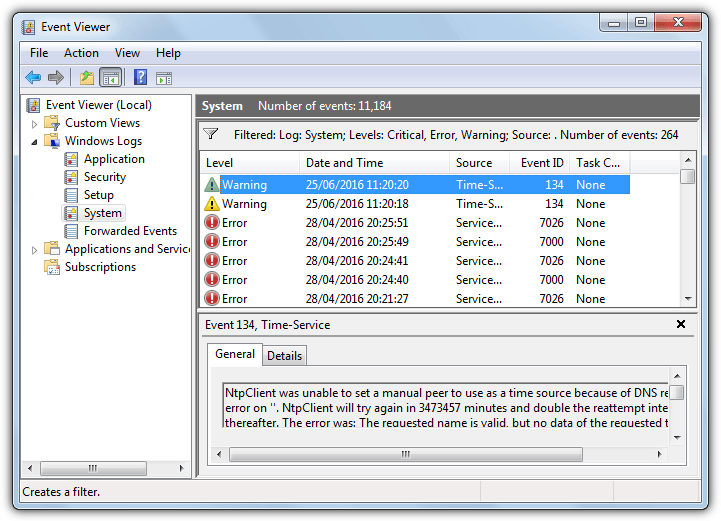
#Event viewer Pc#
You can also connect Event Viewer to another PC or server. Computer – on your home desktop, this will usually just be your PC’s name, but in the IT world, you can actually forward events from one computer or server to another computer.In practice, however, it will almost always say “Info” and is pretty useless. OpCode – this field theoretically tells you what activity the application or component was doing when the event was triggered.This can be helpful when looking through things. User – this field tells you whether it was a system component or your user account that was running the process that caused the error.Critical, on the other hand, means something is broken somewhere, and the component that triggered this event has probably crashed. Error tells you that something happened that shouldn’t have happened, but isn’t always the end of the world. Warning tells you that something might be going wrong, but it isn’t all that important yet. Level – This tells you how severe the event is – Information just tells you that something has changed or a component has started, or something has completed.This is because every application can define their own unique Event IDs. If you were to Google for “event ID 122” that you see in the next screenshot, you wouldn’t end up with very useful information unless you also include the Source, or application name. Event ID – the all-important Event ID can actually be a little confusing.The name usually doesn’t directly match with a filename, of course, but it is a representation of which component did it.
#Event viewer software#
Source – this is the name of the software that generates the log event.Each Windows component will most likely have its own log. Log Name – while in older versions of Windows everything got dumped into the Application or System log, in the more modern editions there are dozens or hundreds of different logs to choose from.They walk you through filtering by only critical errors and then act surprised that all you are seeing are critical errors. In fact, the tech support scammers are using Event Viewer as part of their sales tactic to convince confused users that their PC is infected with viruses. The biggest problem with Event Viewer is that it can be really confusing – there are a lot of warnings, errors, and informational messages, and without knowing what it all means, you can assume (incorrectly) that your computer is broken or infected when there’s nothing really wrong. Understanding Windows Administration Tools.

#Event viewer pro#


Understanding Hard Drive Partitioning with Disk Management.Using Event Viewer to Troubleshoot Problems.Using Task Scheduler to Run Processes Later.


 0 kommentar(er)
0 kommentar(er)
